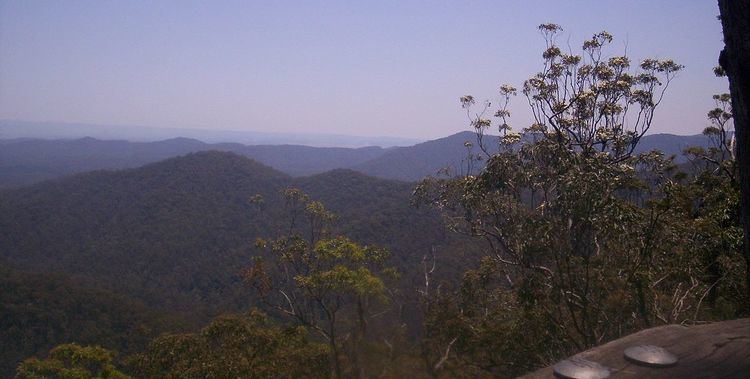Area 20.5 km² | Established 1938 | |
 | ||
Managing authorities Website D'Aguilar National Park See also Protected areas of Queensland Address Mount Mee QLD 4521, Australia Hours Open today · Open 24 hoursWednesdayOpen 24 hoursThursdayOpen 24 hoursFridayOpen 24 hoursSaturdayOpen 24 hoursSundayOpen 24 hoursMondayOpen 24 hoursTuesdayOpen 24 hours Management Queensland Parks and Wildlife Service Similar Archer camping area, Neurum Creek Bush Retr, Neurum Creek Camping, Lake Somerset Holiday P, Walkabout Creek Discovery | ||
Mt mee 4wd day trip d aguilar national park qld tough toys
D'Aguilar is a national park in Queensland, Australia, 31 km northwest of Brisbane. The southern part of the park was formerly known as Brisbane Forest Park, while the northern part of the park is at Mount Mee.
Contents
- Mt mee 4wd day trip d aguilar national park qld tough toys
- D aguilar national park brisbane queensland
- FloraEdit
- FaunaEdit
- References
The park contains expanses of eucalypt woodland, sheltered pockets of subtropical rainforest, remote gorges and spectacular views to Moreton Bay and the Glass House Mountains. The popular Walkabout Creek Visitor Centre is located at the edge of the park. There are two formal, vehicle accessible camping areas in the Mount Mee section and eight remote bush camping sites (accessible only by walking) in the southern D'Aguilar (formerly Brisbane Forest Park) section.
D aguilar national park brisbane queensland
FloraEdit
Woodlands and dry eucalypt forests predominate on the drier, shallower soils of the park's foothills. Spotted Gum (Corymbia variegata) and Narrow-leaved Ironbark are two of the main species. There are also small areas of heath and ridges dominated by grass trees (Xanthorrhoea spp). Remnant pockets of lowland rainforest occur in the valleys along some of the watercourses.
At higher altitudes the forests become more complex due to the increased rainfall and generally deeper soils. These mid-altitude forests are dominated by Grey Gum, Pink Bloodwood and Brush Box. Occasional rainforest species are also present and there is a thick understorey of ferns, vines and shrubs.
Moist sub-tropical rainforest grows on the highest parts of the range where the rainfall is two-thirds greater than in the foothills, particularly on the rich basaltic soils north of Mt Glorious. Huge strangler figs (Ficus watkinsiana) can be seen emerging through the canopy.
FaunaEdit
More than 240 species of birds have been recorded in the park, including the noisy pitta (Pitta versicolor), southern logrunner (Orthonyx temminckii), paradise riflebird (Ptiloris paradiseus), regent bowerbird (Sericulus chrysocephalus), satin bowerbird (Ptilonorhynchus violaceus), brush-turkey (Alectura lathami), laughing kookaburra (Dacelo novaeguineae), pied currawong (Strepera graculina), red goshawk (Erythrotriorchis radiatus), marbled frogmouth (Podargus ocellatus), bush-hen (Amaurornis olivacea), black-breasted button quail (Turnix melanogaster), white-bellied sea eagle (Haliaeetus leucogaster), comb-crested jacana (Irediparra gallinacea) and cotton pygmy goose (Nettapus coromandelianus).
66 mammal species have been recorded in the park, including the echidna (Tachyglossus aculeatus), platypus (Ornithorhynchus anatinus), red-necked pademelon (Thylogale thetis), short-eared possum (Trichosurus caninus), common ringtail possum (Pseudocheirus peregrinus), northern brown bandicoot (Isoodon macrourus), long-nosed bandicoot (Perameles nasuta), Long-nosed potoroo (Potorous tridactylus), insectivorous bats, fruit bats ("flying foxes") (Pteropus spp.), several species of gliding possums and small numbers of koalas (Phascolarctos cinereus) and kangaroos.
There are a variety of reptile species in the park. The most obvious are the tree goanna/lace monitor (Varanus varius), which is a large monitor lizard and the land mullet (Egernia major), which is actually a large, shiny black skink. 26 species of frogs have been recorded in the park, with one of the most spectacular being the great barred frog (Mixophyes fasciolatus). Unfortunately the most common amphibian in the park is an introduced pest, the cane toad (Bufo marinus).
